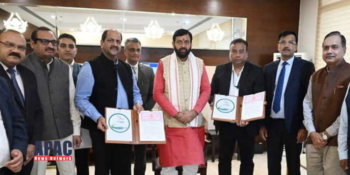New Delhi: India has embarked on an unprecedented infrastructure transformation under Prime Minister Narendra Modi, with a staggering Rs 111 trillion pipeline reshaping the nation’s roadways, railways, and aviation sectors. Dubbed the “Modi Model” by Union Minister Jyotiraditya Scindia, this approach emphasizes Quality, Speed, Quantity, and Coverage (QSQC) as the cornerstone of progress, making infrastructure the “greatest economic multiplier.”
“In the last 10 years, the revolution in infrastructure has established India as a global model. Infrastructure is the greatest economic multiplier, and this is a defining moment for good governance and politics,” said Scindia, highlighting the scale of development.
Quantum of Infrastructure Investment
The Rs 111 trillion infrastructure pipeline is equivalent to the GDP of several developing nations combined, with investments expected to rise to 6.5% of GDP by 2029, growing at a compound annual rate of 15.3%.
Roads: Budget allocations increased from Rs 31,130 crore in 2013-14 to Rs 2.7 lakh crore in 2024-25, with the National Highway network expanding by 60% to 146,126 km.
Railways: Investments surged eightfold to Rs 2,62,200 crore, powering transformative projects like the Mumbai-Ahmedabad Bullet Train.
Aviation: Airport infrastructure nearly doubled, growing from 74 to 157 operational airports, alongside a 78% increase in fleet size from 400 to 723 aircraft.
Unmatched Speed of Execution
India’s infrastructure journey is characterized by dramatic improvements in construction speed:
Roads: Construction pace leapt from 12 km/day in 2014-15 to nearly 35 km/day in 2024, targeting 60 km/day by 2047.
Railways: Track laying rose from 4 km/day to 15 km/day, with 31,180 km completed over the last decade.
Aviation: The inauguration of 15 airports in a single day on March 10, 2024, set a global benchmark for rapid execution.
“There has been significant change in infrastructure development in the past 10 years and the speed of infrastructure development has been unmatched, unseen, and unprecedented. Sikkim and Arunachal Pradesh did not get any airport in 65 years. Today Sikkim has an airport and there are four airports in Arunachal,” stated Scindia.
Quality and Innovation
Infrastructure innovations are significantly reducing costs and improving efficiency:
Roads: Enhanced freight transit has cut logistics costs by up to Rs 4.8 lakh crore annually, with plans to lower logistics costs to 8-9% of GDP by 2030. Iconic projects like the Dhola–Sadiya and Dibang River bridges in the Northeast showcase rapid progress in historically underdeveloped regions.
Railways: India is nearing full electrification of its broad-gauge network (97% achieved) and has ambitious plans for 4,500 Vande Bharat trains and high-speed rail projects by 2047.
Aviation: Drone policies aim to position India as a global leader, with a vision to become the “drone capital of the world” by 2030.
Bridging Regional Gaps
The Northeast region has been a key focus of India’s infrastructure vision:
Aviation: Airports in the region doubled to 17.
Railways: A 384% budget increase facilitated 2,000 km of new tracks.
Roads: Projects worth Rs 63,542 crore have completed 67% of the approved 5,468 km under the Northeast Road Programme.
Scindia lauded these achievements, saying, “By connecting upper Assam with Western Arunachal Pradesh, the Dhola–Sadiya Bridge has transformed connectivity. Our focus on quality infrastructure ensures 24/7 connectivity and reduced travel times.”
Model for Governance
With comprehensive advancements across roads, railways, and aviation, India’s infrastructure development is setting benchmarks for governance and global politics. The minister summarized the progress stating: “The QSQC formula has brought about changes that have turned India’s infrastructure revolution into a global model.”
Also Read –
































































Discussion about this post